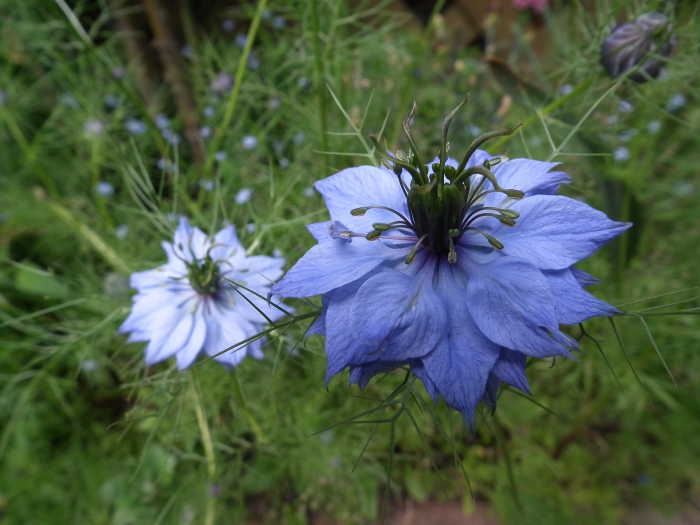Devil In The Bush
(Nigella damascena)
Devil In The Bush (Nigella damascena)
/
/

4028mdk09
CC BY-SA 3.0




















































Estimated Native Range
Summary
Devil In The Bush is valued for its ornamental flowers and seed pods, which are often used in dried floral arrangements. It is a popular choice for cottage gardens, informal borders, and as a filler plant in annual bedding schemes. Its ease of maintenance and ability to self-seed make it a low-care option for gardeners. While it prefers full sun, it can tolerate light shade and is adaptable to a range of soil types, provided they are well-drained. Gardeners should be aware that in some regions, it can self-seed prolifically and may require control to prevent it from becoming weedy.CC BY-SA 4.0
Plant Description
- Plant Type: Herb
- Height: 1.5-2 feet
- Width: 1-1.5 feet
- Growth Rate: Rapid
- Flower Color: Blue, White
- Flowering Season: Spring, Summer
- Leaf Retention:
Growth Requirements
- Sun: Full Sun
- Water: Medium
- Drainage: Slow, Medium, Fast
Common Uses
Bee Garden, Border Plant, Drought Tolerant, Edible*Disclaimer: Easyscape's listed plant edibility is for informational use. Always verify the safety and proper identification of any plant before consumption., Low Maintenance, Potted Plant, Showy Flowers
Natural Habitat
Meadows, fields, and edges of cultivation in southern Europe, North Africa, and southwest Asia
Other Names
Common Names: Damascus Hellebore, Devil-In-The-Bush, Love-In-A-Mist, Love In A Mist, Jack-In-The-Green, Wild Fennel, Damaszener Schwarzkümmel, Gretel Im Busch, Nigelle De Damas, Juffertje-In-Het-Groen, Jungfrun I Det Gröna
Scientific Names: , Nigella damascena, Nigella bourgaei, Nigella damascena var. minor, Nigella coarctata, Nigella bithynica, Nigella damascena subsp. minor, Nigella taurica, Nigella damascena var. africana, Nigella nana
GBIF Accepted Name: Nigella damascena L.